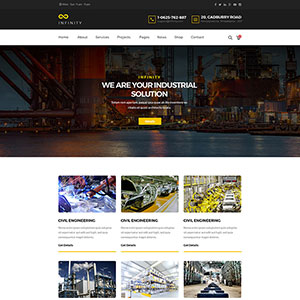Each year, Mary C. Holcomb, Associate Professor at the University of Tennessee and Karl B. Manrodt, Professor at Georgia Southern University, in partnership with Con-way Inc., Ernst & Young, and Logistics Management conduct research and prepare an Annual Study of Logistics and Transportation Trends (Masters of Logistics) report. This year the studysuggests that logisticians are now facing the freight transportation version of a Bermuda Triangle, one which, if left unattended, has the potential to create disastrous and inexplicable outcomes.
“For the past two and a half years, companies have been simply reacting to what some economists and financial experts are calling the ‘new normal.’ The hallmark of this new business environment is a sluggish economy that is forecasted to grow at an annual rate of just under 2 percent. To exacerbate matters, the new normal also has unpredictable and volatile change at both the demand and supply ends of the supply chain.”
The authors also point out that after a dip in freight costs as a percent of revenue in 2008 and 2009; this percentage is on the rise. Shippers are being squeezed by sluggish growth and rising freight costs. The authors characterize a confluence of three factors facing shippers as a form of “Bermuda Triangle.” The Triangle . . . “consists of (1) a lack of planning for the impact of rising fuel prices; (2) a rigid network that is incapable of flexing when uncertainty occurs; and (3) a myopic internal focus that limits the enterprises’ ability to achieve the desired performance results.”
These three factors are explained as follows. “The data from this year’s annual study suggests that ‘tried and true’ approaches are being used. We asked study respondents about the level of maturity for a variety of actions and initiatives aimed at improving operating efficiency. The top five most mature actions are: (1) the use of core carriers; (2) the use of dedicated transportation; (3) carrier tracking; (4) load planning; and (5) shipment consolidation.
Perhaps even more revealing is that more than half of the 22 actions and initiatives presented to participants had been completed for several years. Three other actions or initiatives that are poised to assist in keeping transportation costs in line include the use of new transportation technology; the use of ‘green’ carriers such as Smartway; and freight balancing or pooled distribution. Interestingly, the use of intermodal shipments and sharing capacity forecasts with carriers or other service providers are the top two actions currently in the planning stages. The analysis showed that there is no predominant action or project that is being used or planned to improve transportation efficiency.”
When asked what primary action the company (or business unit) would take to offset the accompanying rise in transportation costs, the leading response was “no actions are currently planned.” This was followed—in rank order—by “increases will be passed along to the customer,” “improved load planning,” and “improved route planning.” The first two options will be unacceptable to management at the “C” level who will expect a response that will deliver results.
The latter two actions, improved load and route planning, are execution oriented. While this level of action will produce results, it can be a short-term, sub-optimal approach. Improved route planning tied with network optimization/ redesign is a way to offset a rise in transportation costs. It’s at this strategic level that a long-term, “best line of attack” can be formulated to avoid what appears to be unexplained mishaps in the Triangle.
At an operational level, cost-to-serve and energy (fuel) prices affect transportation choices. It’s not surprising therefore that supply chains use truckload (TL) as the principal mode for moving freight. The data for 2011 indicate that TL’s share of the transportation budget increased to 32.1 percent as compared to 27.2 percent for 2010.
“Transportation plays a lead role in the firm’s pursuit to improve supply chain flexibility,” says Con-way’s Tom Nightingale, vice president of communications and chief marketing officer. The study data indicate that the top initiatives completed to date to improve supply chain flexibility include the use of multiple transportation modes to meet delivery schedules, the use of freight brokers for shipping needs, and the increased use of multiple transportation modes to meet delivery schedules. “These actions are tactical and operational,” says Nightingale. “While they can be part of a larger plan to improve supply chain flexibility, they are not sufficient in and of themselves to achieve this goal.”
The study results indicate that there remains a meaningful planning gap between the firm and its key customers and suppliers. This gap results in a myopic, internal focus that limits the degree to which the firm engages its key supply chain partners in strategic initiatives such as sales and operations planning (S&OP) and company-wide inventory reduction initiatives.
While not specifically mentioned in the study, freight bids, which are still popular with many shippers have also lost some of their effectiveness due to the steep decline in freight costs. For many carriers, their freight rates are at or just above their costs leaving them little room to offer much more savings to shippers. Shippers will need some more innovative approaches to reduce their freight spend.
The authors conclude their study by saying that “avoiding the logistics and transportation Bermuda Triangle isn’t that difficult—it means separating folklore from reality. Successful navigation requires planning in advance of potential hazards and working with partners to maximize current efforts. Last, but not least, it involves future thinking in order to plot a course toward innovation. Those who accept the status quo may not be heard from in the years to come.”



















